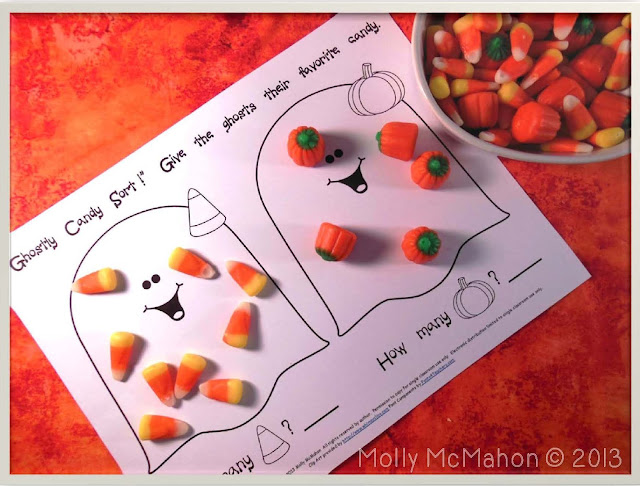I've seen some teachers collaborate when organizing their special holiday events. Within a grade level, each teacher plans one craft, snack, game, or other activity. The children rotate from one classroom to another during their celebration. One teacher is responsible for one activity. He/she repeats the activity for each group of children within the grade level.
This is a great way to reduce everyone's work load during the busy holiday season. It also gives the children a chance to visit other classrooms and it's fun for the kids. Bingo games are an easy, no-mess, activity that could be used for this purpose.
This post showcases my "Santa's Bingo" game. I wanted the game to be practical for a variety of school situations as well as to have educational merit. This influenced the type of words I used.
The black and white option is great for immediate use. The words could also be cut out by the children and used for word sorts after playing the game. The children can color the pictures with the black and white bingo game if time permits. Here are a few pictures from my "Santa's Bingo" games.
There are 25 unique bingo cards. Each bingo cards uses the same 24 words. The center space is the "free" space which has a Christmas themed graphic.
Students can mark their cards with paint daubers, bingo chips, math cubes, coins, mini erasers, or anything else that can fit within the squares.
The bingo cards print on a full sheet of paper. (8.5 inches x 11 inches)
The color version of the game could be laminated for repeated use over several years.
I used seasonal erasers from the Dollar Tree as game markers in the photo shown below.
I used common nouns and proper nouns for the words in "Santa's Bingo". There is also a mix of singular nouns and plural nouns. Two adjectives (the word red and the word green) were also used. If you'd like ideas about word sorting with this bingo game, read on after the product covers shown below.
Click on either product cover if you are interested in the black and white or color version of the games.
Sort One - Singular Nouns and Plural Nouns:
This sort is for 20 of the 24 words in the bingo game. Remove the words green, red, North Pole, and candy cane. If your students are cutting out the words from the black and white bingo sheet, have them throw away those four words. If your students are doing the sort on the board, have students cross out those for words from their bingo sheet.
Singular Nouns: tree, ornament, Christmas, December, Santa, sleigh, holiday, star, wreath
Plural Nouns: elves, stockings, carols, candles gifts, toys, bells, lights
Singular and Plural Nouns: tinsel, garland, reindeer
Sort Two - Common Nouns and Proper Nouns:
This sort is for 22 of the 24 words from "Santa's Bingo". Discard the two adjectives which are the words red and green.
Proper Nouns: Christmas, Santa, December, North Pole.
Common Nouns: All the other words!
Sort Three - Number of Syllables:
This sort uses 14 of the 24 words from the bingo games. None of the 8 plural nouns are used in this sort. Additionally, the words candy cane and North Pole are not included in the sort.
1 Syllable Words: sleigh, red, tree, green, wreath, star.
2 Syllable Words: Christmas, tinsel, Santa, garland, reindeer.
3 Syllable Words: holiday, ornament, December.
Sort Four - Nouns and Adjectives:
This sort uses all of the 24 words from "Santa's Bingo".
Adjectives: red, green
Nouns: All the other words!
Lessons by Molly © 2013 All rights reserved.


















































